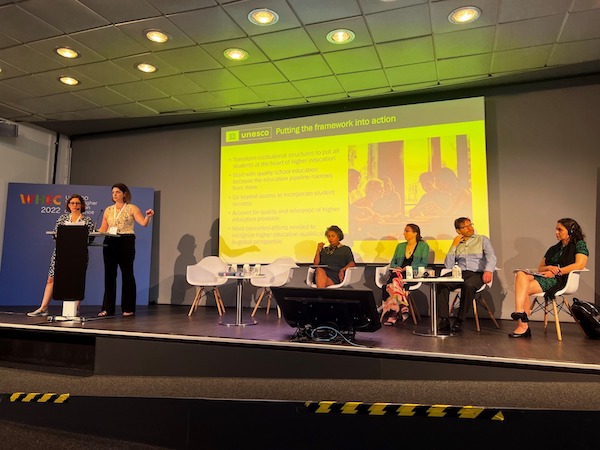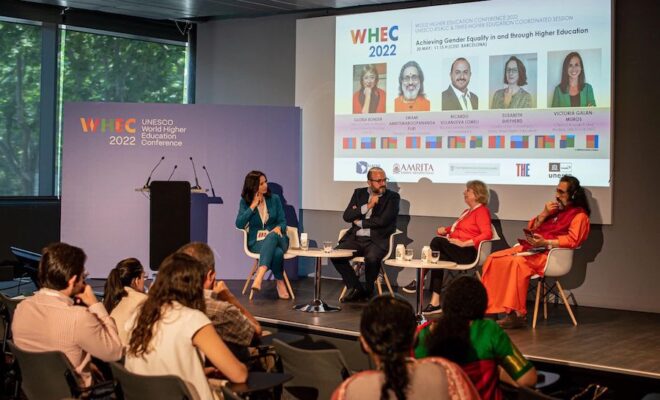New approaches to the right to Higher Education

Welcoming remarks: Borhene Chakroun, UNESCO
Moderators: Sharlene Bianchi, UNESCO; Rolla Moumné, UNESCO; and Emma Sabzalieva, UNESCO IESALC.
Panelists: Delphine Dorsi, Director, Right to Education Initiative, UK; Laura Giannecchini, Institutional Development Coordinator, Latin American Campaign for the Right to Education (CLADE), Ecuador; Tristan McCowan, Professor of International Education, University College London, UK; Mary Tupan-Wenno, Executive Director, ECHO, Center for Diversity Policy, The Netherlands.
Closing Remarks: Francesc Pedró, UNESCO IESALC Director
This round table was organized considering the reinvigorated efforts by UNESCO to place the right to higher education at the heart of the evolving right to education agenda and the commitment to elevating the right to higher education.
UNESCO IESALC has created a new social justice framework that emphasizes the need to make structural and systemic transformations to put all students with diverse backgrounds and needs at the heart of higher education. The roundtable also saw the official launch of the UNESCO IESALC concept paper The right to higher education: A social justice perspective
Keypoints

- Inclusive excellence: focus on actions that institutional leaders and staff should take.
- Intersectionality: ensure that we don’t just think of one equity deserving group but grapple with the complexity that intersectionality brings forward
- Students at the heart of HE: the need of quality school education, that pipeline that is created on the way to HE. Also, to go beyond just access and thing about what happens when students are in HE and what works for them.
- From an international perspective we need to make a better effort to recognize HE qualifications accross borders.
- States have an obligation to make HE increasingly accessible. However, indirect and direct costs are still present, putting students into debt.
- When it comes to inclusion, we know that disadvantaged students have a poorer quality of education, which affects their academic performance and dropout rates
- It is vital to connect HE with other education levels to reduce dropout rates and increase access to HE.
- The most marginalized students should be prioritized with affirmative actions.
- UNESCO IESALC has created a new social justice framework that emphasizes the need to make structural and systemic transformations put all students with diverse backgrounds and needs at the heart of higher education.
Related posts
RELATED ITEMS








